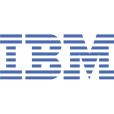
A U.S. District Court has upheld the validity and enforceability of the TOPAMAX® (topiramate) patent, and today issued a permanent injunction against Mylan Laboratories, Inc. The injunction prohibits Mylan from selling generic topiramate tablets and capsules in the U.S. until the Ortho-McNeil Neurologics, Inc., compound patent on TOPAMAX® expires in 2008.
Mylan filed an Abbreviated New Drug Application ("ANDA") to market topiramate before the expiration of the patent, claiming the patent was invalid. Ortho-McNeil Neurologics, Inc., filed a patent infringement complaint against Mylan in April 2004. A preliminary injunction against Mylan was granted on October 23, 2006.
The final ruling, issued by U.S. District Court Judge Stanley R. Chesler in Newark, NJ, directs the U.S. Food and Drug Administration (FDA) to change the effective date of Mylan's approvals to market its generic topiramate products to no earlier than September 26, 2008, the date of the TOPAMAX® compound patent expiration. Cobalt Pharmaceuticals, which Ortho-McNeil Neurologics, Inc., sued in October 2005, agreed to be bound by the outcome of the Mylan case.
TOPAMAX® is indicated as monotherapy in patients with newly diagnosed epilepsy or for conversion to monotherapy in patients with epilepsy. It is also indicated as adjunctive therapy for adults and children (aged two and above) with partial onset seizures or generalized tonic-clonic seizures, and in adults and children as adjunctive therapy for the treatment of seizures associated with Lennox Gastaut syndrome. TOPAMAX® is indicated in adults for the prophylaxis of migraine headache. The usefulness in the acute treatment of migraine headache has not been studied.
Headquartered in Titusville, NJ, Ortho-McNeil Neurologics, Inc., focuses exclusively on providing solutions that improve neurological health. The company currently markets products for Alzheimer's disease, epilepsy and acute and preventative migraine treatment. Ortho-McNeil Neurologics, Inc., in conjunction with internal and external research partners, continues to explore new opportunities to develop solutions for unmet healthcare needs in neurology.
TOPAMAX® Important Safety Information for EpilepsySerious risks associated with TOPAMAX® include lowered bicarbonate levels in the blood resulting in an increase in the acidity of the blood (metabolic acidosis), and hyperventilation (rapid, deep breathing) or fatigue. More severe symptoms of metabolic acidosis could include irregular heartbeat or changes in the level of alertness. Chronic, untreated metabolic acidosis may increase the risk for kidney stones or bone disease. Your doctor may want to do simple blood tests to measure bicarbonate levels.
Other serious risks include increased eye pressure (glaucoma), decreased sweating, increased body temperature, kidney stones, sleepiness, dizziness, confusion and difficulty concentrating. Tell your doctor immediately if you have blurred vision or eye pain.
More common side effects in adults are nervousness, coordination problems, fatigue, speech problems, slowed thinking, memory difficulty, tingling in arms and legs and double vision; and in children, fatigue, loss of appetite, nervousness, memory difficulty, aggressive behavior and weight loss.
As monotherapy, the most common side effects of TOPAMAX® (in the 400 mg/day group and at a rate higher than the 50 mg/day group) in adults were tingling in arms and legs, weight decrease, sleepiness, loss of appetite, dizziness and difficulty with memory; and in children, weight decrease, upper respiratory tract infection, tingling in arms and legs, loss of appetite, diarrhea and mood problems.
In combination with other antiepileptic drugs (AEDs), the most common side effects of TOPAMAX® in adults (200 to 400 mg/day) were sleepiness, dizziness, nervousness, loss of muscle coordination, fatigue, speech disorders and related problems, psychomotor slowing, abnormal vision, difficulty with memory, tingling in arms and legs and double vision; and in children (5 to 9 mg/kg/day), fatigue, sleepiness, loss of appetite, nervousness, difficulty with concentration/attention, difficulty with memory, aggressive reaction and weight decrease.
Tell your doctor about other medications you take.
Please see full U.S. Prescribing Information at
www.TOPAMAX-epilepsy.com TOPAMAX® Important Safety Information for MigraineSerious risks associated with TOPAMAX® include lowered bicarbonate levels in the blood resulting in an increase in the acidity of the blood (metabolic acidosis), and hyperventilation (rapid, deep breathing) or fatigue. More severe symptoms of metabolic acidosis could include irregular heartbeat or changes in the level of alertness. Chronic, untreated metabolic acidosis may increase the risk for kidney stones or bone disease. Your doctor may want to do simple blood tests to measure bicarbonate levels.
Other serious risks include increased eye pressure (glaucoma), decreased sweating, increased body temperature, kidney stones, sleepiness, dizziness, confusion and difficulty concentrating. Tell your doctor immediately if you have blurred vision or eye pain.
More common side effects are tingling in arms and legs, loss of appetite, nausea, diarrhea, taste change and weight loss.
Tell your doctor about other medications you take.
Please see full U.S. Prescribing Information at
www.TOPAMAX.com or call 1-888-526-7736.
 At the upcoming "Workshop on Solving Computational Challenges in Medical Imaging," IBM (NYSE: IBM) and the University of Washington will show how next-generation technology currently featured in computer entertainment and video-processing platforms is driving advancements in medical imaging.
At the upcoming "Workshop on Solving Computational Challenges in Medical Imaging," IBM (NYSE: IBM) and the University of Washington will show how next-generation technology currently featured in computer entertainment and video-processing platforms is driving advancements in medical imaging.









